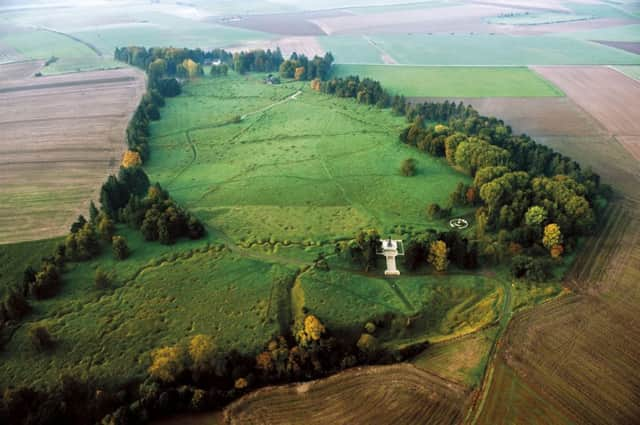Book documents World’s most remote war graves


The final resting place of a young Scottish deck-hand who died during the First World War is featured in a new book that highlights the most far-flung graves of Commonwealth soldiers, released to coincide with the centenary of the conflict.
The war grave of deck-hand D Grant, who was killed on 30 May, 1916, while serving in the Royal Navy, appears alongside images from the African desert and the great plains of Canada.
Advertisement
Hide AdToday, staff from the Commonwealth War Graves Commission (CWGC) must hire a boat to reach St Finnan’s Isle to inspect the grave of Grant who lived just across the loch in the hamlet of Dalelia.
The book, For the Fallen, captures the stories behind war graves and memorials across the world in what is being billed as a photographic tribute to the unsung heroes of the Great War and the tireless work of the CWGC.
For the book, photo journalist Michael St Maur Sheil visited hundreds of sites, from the spot where a soldier was buried alongside his twin, who died the same day, in Saskatchewan, Canada, to a memorial by the Tower of London dedicated to 12,000 men lost at sea.
Accompanied by a commentary from Peter Francis, from the CWGC, it is hoped the photos will give an insight into the sheer number and spread of war graves and the commission’s work in maintaining them.
From headstones in the remote Namib Desert to those in the undergrowth of Buff Bay in Jamaica, to the 72,000 names on the Thiepval Memorial in France, the book aims to commemorate some of history’s greatest and most devastating battles and the men and women who fought and died in them.
Yesterday Mr Francis said of Loch Shiel: “Our regional supervisor in Scotland is scheduled to visit the site shortly. The cemetery is privately owned and no longer used for burials – which makes caring for the two war graves challenging. Our man has to hire a boat to get to the island.”
Advertisement
Hide AdThe island is also the resting place of a soldier from the Second World War.
Mr Sheil said he wanted to “make each picture count”. He said: “I did not want the book to be just a collection of stones and crosses but rather show the cemeteries within the landscape.
Advertisement
Hide Ad“They were all equal places of death. The handful of men buried at Trekkopje in the Namib Desert are just as ‘dead’ and were just as missed by their families as the mass of men in Tyne Cot.”
Tyne Cot is a CWGC burial ground in Belgium. It is the largest cemetery for Commonwealth forces in the world.